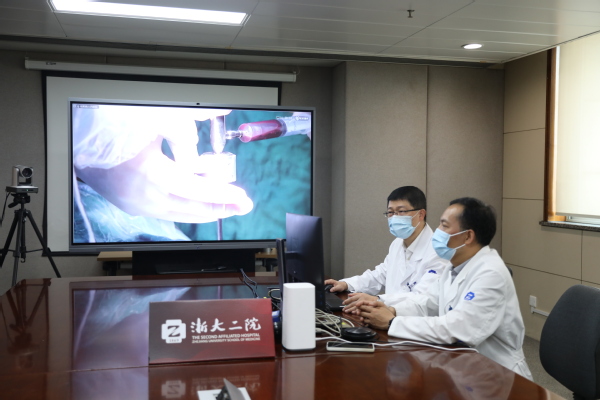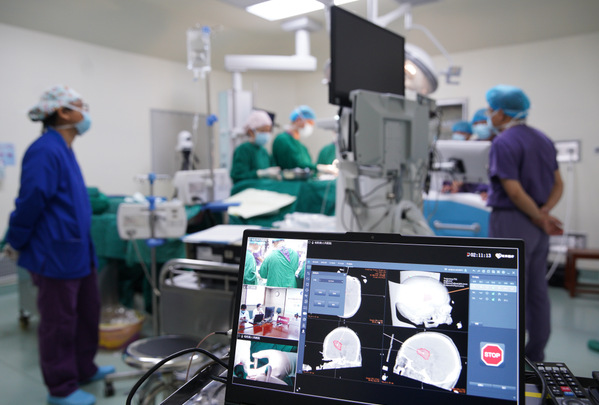SAHZU Performs China’s First 5G-Assisted Remote Intracerebral Hematoma Aspiration
On June 17, Prof. LIU Fengqiang, a neurosurgeon from the Second Affiliated Hospital Zhejiang University School of Medicine (SAHZU),remotely manipulated Remebot, a stereotactic neurosurgery robot, through a 5G network to evacuate the intracerebral hematoma of a patient, who was located 200 kilometers away in Songyang Hospital of Li Shui City. This marked the successful establishment of China’s first 5G-based digital neurosurgery operating theater.

During the surgery, the scene of the operational site in Songyang as well as the Remebot’s platform were transmitted back in real time to the 5G Remote Command Center at SAHZU. Owing to the large bandwidth and extreme low latency of the 5G network, the neurosurgeons in both locations could interact and communicate in almost the same surgical environment. The surgery turned out to be smooth and safe with no observable bleeding or other complications.

“The operation highlights two advanced technologies,” said Prof. CHEN Gao, the project leader and vice chair of SAHZU Neurosurgery. “One is the navigation system of the stereotactic neurosurgery robot. By finding the most appropriate surgery approach after multiple surgical simulation and planning, the system can assist doctors to achieve the best surgery outcome with the minimal wound. The other is the 5G network technology, which enables two cities to communicate in high efficiency, to share surgical images in real time, and to operate the robot and tele-mentor the surgery with the greatest ease.
Watching the hematoma successfully evacuated by SAHZU doctors remotely, Prof. WANG Jian’an, director of SAHZU proudly said, “SAHZU is the first hospital in China that uses the 5G remote ultrasound technology, owns the 5G ambulance, and operates the drone-delivery of blood. Now, another first record of 5G based digital neurosurgery operating theater is being established by SAHZU. We will continue to pioneer ‘Internet plus healthcare’ programs and apply the most advanced digital technology to healthcare services to help more lives.”
Source: The Second Affiliated Hospital Zhejiang University School of Medicine